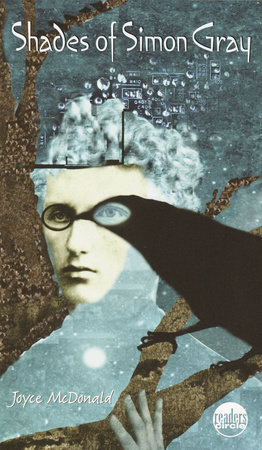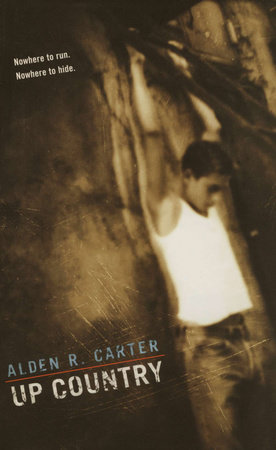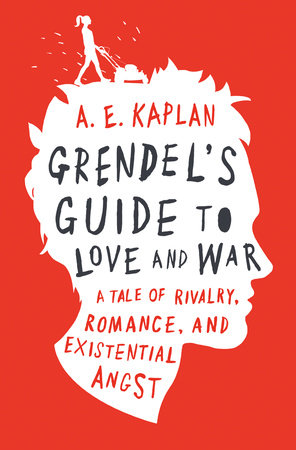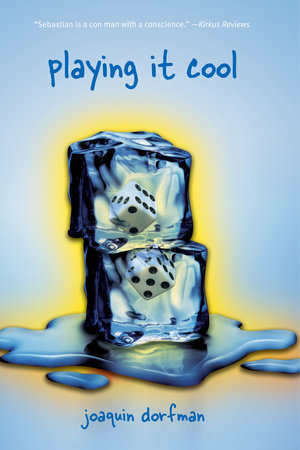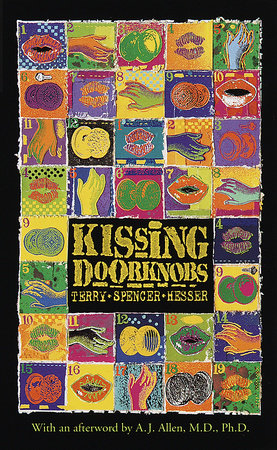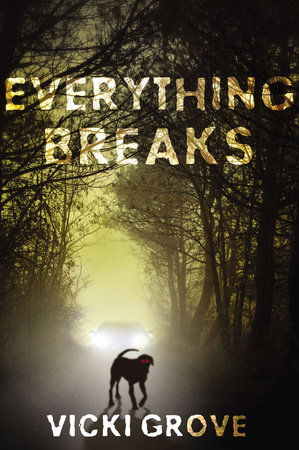IN HER OWN WORDS–A CONVERSATION WITH JOYCE MCDONALD
Q. You have had careers in publishing, academia, and writing. Which is the most fulfilling?
A. Writing fiction has been an important part of my life since I was six years old and the most fulfilling of my careers. All of my careers, however, have been connected to or have contributed to my writing, whether I was teaching the works of other writers in a literature class, teaching students how to write short stories, or editing someone else’s work. Having experienced all aspects of the field: writing, editing, production, promotion, teaching, and of course, the pleasure of reading, I’m able to look at my work from many different perspectives. Teaching literature gave me a critical eye with which to evaluate my own work. Teaching also gave me the opportunity to be around older teens. They kept me in tune with current trends and attitudes.
Q. Who are the young adult authors you enjoy reading?
A. There are many whose work I admire. David Almond, Laurie Halse Anderson, Robert Cormier, Annette Curtis Klause, Han Nolan, and Ellen Wittlinger, to name a few. Alice Hoffman, although primarily a writer of adult fiction, has created several memorable teens in her work.
Q. Tell us about the title. When and how did you develop it?
A. The phrase shades of gray crept into my head one night just as I was falling asleep. For some reason, I felt the need to add a person’s name. The name that came to me almost immediately was Simon. A few weeks earlier I had read a newspaper article about a group of teens who had stolen a teacher’s password to download a test. I sensed that somehow the phrase shades of gray was connected in my mind to what I’d read in an article. (Newspaper articles are often the impetus for my books.)
This particular news story was also about a local teen, a boy with a reputation for being a great kid, an Eagle Scout, top student, college bound, respected in his community, who had gone out to the woods behind his house and shot himself. The suicide appeared to be linked to the computer incident at school. He and the other boys had been suspended, with hearings pending. This boy’s story haunted me. I wondered why he chose such a drastic way out of his situation. To all outward appearances, he was the perfect student, son, brother, and friend.
I wrote the book to answer the questions that arose both from the article and from the phrase shades of gray that had come to me in the night. When I was done, I understood that the phrase worked on several levels. It captured the main theme of the book–the elusiveness of truth and the way individual perceptions blur the borders of reality–in all its shades of gray. Simon, too, is connected to the phrase. Like all of us, he is many things to many people. Almost all the characters, with the exception of Devin, choose to see him in one-dimensional terms. But there are many shades to his personality. I also liked the other implications behind the word shades. It suggests those things that haunt Simon–literally and figuratively.
Q. Shades of Simon Gray is told in a nonlinear fashion. How did you keep track of all the elements? Did you write the stories about the individual characters and then integrate them or did the story flow continuously?
A. The interconnected stories seemed to flow naturally in and out of each other. My writing tends to be organic. I don’t use an outline, although I usually have a vague sense of how the story might end. This gives me something to move toward, even if I don’t know how I’m going to get there. Often the ending I originally envisioned doesn’t come about. One of the ways that I keep track of the events in the story is to create a calendar. But I don’t do this until I begin the revision process.
My first draft is always the heart and soul of the book–the spirit of which doesn’t change, even through several revisions. I live the story along with my characters. In the revisions that follow I attempt to bring some coherent order to the book, to determine my main theme and subthemes and then enhance them. It’s not unusual for me to cut a hundred or more pages and numerous characters, or to do massive rewriting. Initially, in Shades of Simon Gray, I had two other characters in Kyle’s group. After I’d written the first sixty pages, I cut one of the characters. Later, my editor suggested cutting yet another. So the group of teens went from six to four.
Q. Some people say cheating has become more common in high school. Was part of your reason in writing Shades of Simon Gray to shed new light on the issue and to get your readers to think about it?
A. My reasons for writing this book (and all my books) are first and foremost to entertain my readers and second, to explore and attempt to understand human nature. I hope my readers find pleasure through escaping into the fictional world I’ve created. If, while reading the story, they discover something of value to themselves personally, through the actions or behavior of the characters–something that moves them or inspires them (or even offers topics for discussion)–that’s extra fruit on the tree.
Q. Most towns in the United States have kept their names since their founding, yet the town’s name in your book is changed from Havenhill to Bellehaven. Was there any significance in that name change?
A. I grew up in Chatham, New Jersey, an area steeped in pre-Revolutionary and Revolutionary War history. An area a few blocks from my family home was once called Bonnell Town, after a prominent family who owned a mill near the Passaic River. It wasn’t until after the Revolutionary War that the town was named Chatham. The neighboring town of Madison, where I also lived for a few years, was originally called Bottle Hill. It wasn’t named Madison until the mid-1800s. So it seemed perfectly natural to me that a town’s name might change. My choice to change the name from Havenhill to Bellehaven wasn’t a conscious decision at the time. But after I’d completed the first draft of the book, I realized this change was connected to one of my themes: hiding truth by creating illusions of reality. The word belle in French means beautiful. That was how the people of Bellehaven wanted their town to be perceived, even though, like most towns, it had its share of dark secrets.
Q. Why did it take 200 years for justice to catch up to the town of Bellehaven?
A. In relation to the universe (meaning in the ultimate scheme of things) there is no “time limit” on justice. In fact, I intentionally play with our perceptions of time in this book. Jessup Wildemere continues to wait beneath the tree for his beloved Hannah. For him, time has practically stopped altogether. Likewise, Simon has no sense of time while he is in a coma or experiencing journeys beyond his physical body. When the two characters are together, their present times, although two hundred years apart, coexist in the same place. As for justice, I like to think that, humans aside, the natural world seeks balance in its own way. Time is irrelevant. Simon’s actions the night his car crashes into the Liberty Tree set in motion the events that will right an old wrong and bring things into balance once again. Jessup and Simon share a common bond, not the least of which is the tree itself.
Q. The punishment the town receives in the form of plagues is biblical–or mythical–in its proportions, yet you allow Kyle to get away with it. Why?
A. It’s an unfortunate fact of life that many who commit crimes are never caught or punished–at least not by the judicial system. That’s just the way it is. All of the characters in Kyle’s group “get away with” their crime, if you consider that none are ever accused of the breech of security of the school’s computers. All of them, with the exception of Kyle, however, deal with the consequences of their actions in some way. The difference lies in the choices each character makes at the end of the book, regarding his or her actions and involvement in “the project.” Devin, for example, chooses to accept that what she has done is wrong and then changes the direction of her life. Kyle doesn’t believe he has done anything wrong, or if he does, he manages to justify his actions in his own mind. Just because he doesn’t get caught by the end of the book doesn’t mean that Kyle will never pay a price for what he has done. Consider Jessup’s story and the descendants of the men who hanged him in connection with the strange events that are visited on Bellehaven. The consequences of the actions of one individual affect us all.
Q. Which character is the most sympathetic? Which is the most evil?
A. For me, the most sympathetic character is Simon. He has risked it all for love. On the night of the car accident, he believes that he is about to lose everything. His struggles are not only physical–his battle with death–but emotional and psychological. He must fight his way out of the dark coma and back into the light.
I don’t see any of the characters as truly evil, but I do see some as having made wrong choices. The closest I’ve come to writing about an evil person was the character of Hollis Feeney in Shadow People. He is devious, manipulative, vengeful, and without remorse. He feels no compassion for or connection to the people whose lives he has helped to destroy. Creating his character–attempting to get inside his head–was extremely difficult and emotionally draining. Kyle, while self-centered and ambitious, is flawed but not necessarily evil.
Q. Why did you portray the computer teacher as a corrupt person? Is he just someone who is trying to be one of the guys with the jocks, or are you telling us that unethical acts extend into the adult population of our schools?
A. I wasn’t making any judgments or statements about the adult population in our school system. George McCabe’s character (the computer science teacher) evolved from another newspaper article I had read about a teacher in New Jersey who had committed a similar offense. As I mentioned earlier, one of the reasons I write books is to better understand human nature. I do this through the characters I create. There is no age limit on making bad choices. George McCabe, like most of the characters in the story, does just that. His motivations aren’t spelled out for the reader, but his decision to allow the football team to use the computers in the manner they do suggests he’s fulfilling some need to “fit in,” to be “one of the guys.” His basic motivation isn’t that different from Simon’s desire to be a part of Kyle’s group.
Q. Simon and Liz seem to have a spiritual connection. Do you believe that people can communicate on that level?
A. I do think people–especially those who are close to one another, as are Simon and Liz–communicate in ways that go beyond language. Most of the time we chalk these moments up to coincidence and keep on rolling without giving them much thought.
Q. Do you mean the out-of-body experiences that Simon has to be sheer fantasy or do you want your readers to believe they happened? What do you believe about near-death experiences and visions?
A. Readers are free to interpret Simon’s experience in any way they choose–as a dream, a supernatural occurrence, or something else. For me, reading is a creative collaboration between reader and writer. As a writer, I intentionally leave much to the reader’s imagination. Every reader will experience my book in a different way. Once I’ve sent a manuscript to my editor, the book no longer belongs to me. It takes on a life of its own. It is a living thing in the sense that it shifts and changes to fit the creative imagination of the person who is reading it.
I’ve read about near-death experiences, and I’ve read the scientific explanations behind them. What appeals to my imagination is the mystery itself. When Simon’s character (during an out-of-body experience) first showed up on Stanley Isaacson’s hospital bed, no one was more surprised than I was. Until that moment, I thought I was going to develop Simon’s character solely through the perceptions of the other characters. And I was equally surprised when he showed up at the Liberty Tree. At that point I decided to let Simon take me on his journey, even though I hadn’t planned it. It was fascinating to travel with him through this experience. I might have been driving the car, but, as often happens, it was the characters who were navigating.
